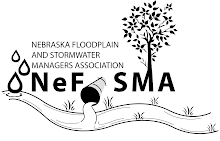Say It With Pictures: Training Construction Site Workers in Erosion and Sediment Control,
Barry Tonning, Director of Applied Research, Tetra TechAttendees will learn how to use photographs, simple graphics, and summarized text/tables to train construction site personnel in stormwater management.
Sediment washing into streams is one of the biggest water quality problems nationwide. It is not difficult to reduce erosion and prevent sediment from leaving construction sites, but some attention to basic concepts and training is necessary. A new, user-friendly photo-packed field guide is helping to lead field personnel through a series of specific steps to control erosion and sediment loss from construction sites. The document was subject to a lengthy stakeholder process and has been copied by a number of jurisdictions in the US (Vermont, Texas, Nevada, Colorado) and overseas (New Zealand, Guam).
Geared mainly toward in-the-field users, the Field Guide stresses basic principles. The guide begins with sections on pre-project planning and operational activities. The rest of the guide discusses erosion prevention and sediment control by starting at the top of the hill, above the project site, and proceeding down the slope through the bare soil area, ditches and channels, traps and basins, and on down to the waterways below. The approach focuses on laborers, equipment operators, job site supervisors, and others responsible for daily placement, installation, and maintenance of erosion and sediment controls, who noted in informal surveys that:
· Some existing field guides are “too engineery” — the BMP drawings are too technical, the information is too detailed, and the text is too dense for field personnel to understand.
· In many cases, erosion and sediment control guidance documents assume that field personnel know where BMPs should be placed. Little guidance is found that presents a conceptual overview of where things should go on the ground.
· Pictures of good and bad BMP installations are preferred over drawings, tables, and text.
· Simple color drawings of basic concepts and practices are easier to understand than detailed technical information presented via table and text.
· Regulatory and compliance information is typically full of detail, complex text, caveats, and jargon. Such information should be simplified, summarized, and moved back to the appendices, not placed in the front of the document.
· The final document should fit into a pocket, be waterproof, and be easy to browse for specific information.
Appendices include NPDES stormwater requirements, Clean Water Act Section 404 and 401 provisions, floodplain regulations, additional details for state transportation projects, a BMP site checklist, and an inspection report form. The book is printed in a 4- by 9-inch spiral-bound, laminated format.


No comments:
Post a Comment